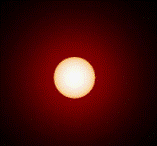Department of Physics and Astronomy: Publications and Other Research

Norman R. Simon Papers
Document Type
Article
Date of this Version
2000
Citation
Brain Research 860:1–2 (March 31, 2000), pp. 64–76; doi: 10.1016/S0006-8993(00)01974-0.
Abstract
A 64-channel, whole cortex magnetoencephalographic system was employed to obtain sleep data from three healthy subjects. Based upon visual inspection of the signals and the corresponding power spectra, we were able to discern a number of features characterizing the evolution of sleep. These included: (1) the transition from records dominated by the alpha rhythm to records in which alpha is attenuated and slower waves increase; (2) the appearance of sleep spindles, particularly in the parietal channels; and, perhaps most interesting, (3) a slow wave phase whose multichannel spectral signature is a broad rounded maximum in the frequency region around 0.5 Hz. Topographical features of the sleep record were also studied. In two of our subjects, rough lateral symmetry was apparent. As their sleep deepened, the distribution of signal power over the head changed such that the maximum moved in the forward and lateral directions, with parietal and temporal signals strengthening relative to the occipital. The records of the third subject showed a tendency toward right dominance, while topographic changes with sleep depth were minimal. Only one of the subjects was able to sustain the deep, slow-wave stage. Here, characteristic multi-detector outbursts appeared, lasting between 150 and 500 ms. During these intervals, widespread topographic patterns were sustained over the head (often with striking dipolar or quadrupolar forms), while crude source modeling yielded two persisting dipoles, laterally paired. Thus, these outbursts seem to represent large-scale, quasi-static configurations of brain activity perhaps related to the K-complexes, which occur earlier in sleep. Finally, we compare our results with those of previous investigators, including work on human electroencephalographic data and research reported by Steriade et al. from animal studies.


Comments
Copyright 2000 Elsevier Science B.V. Used by permission.